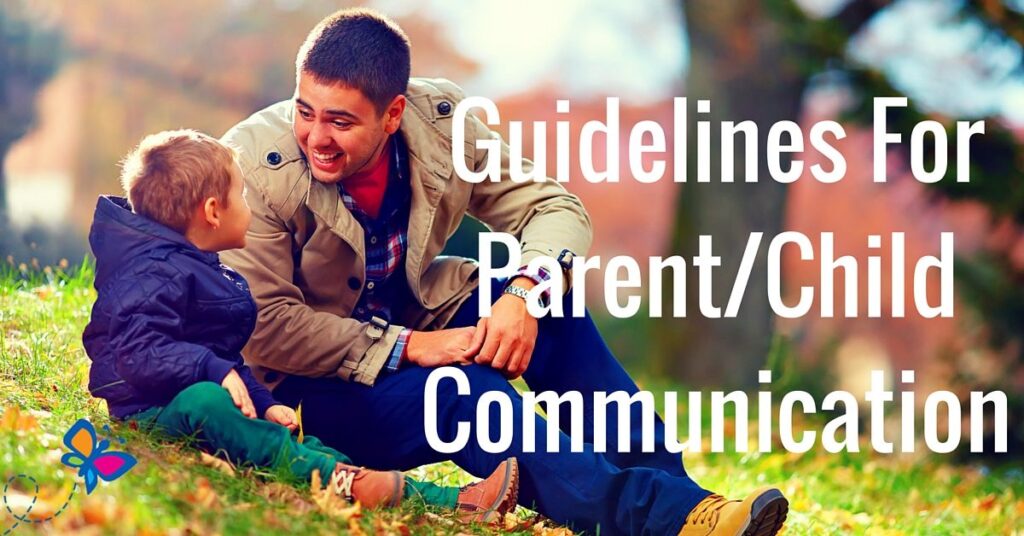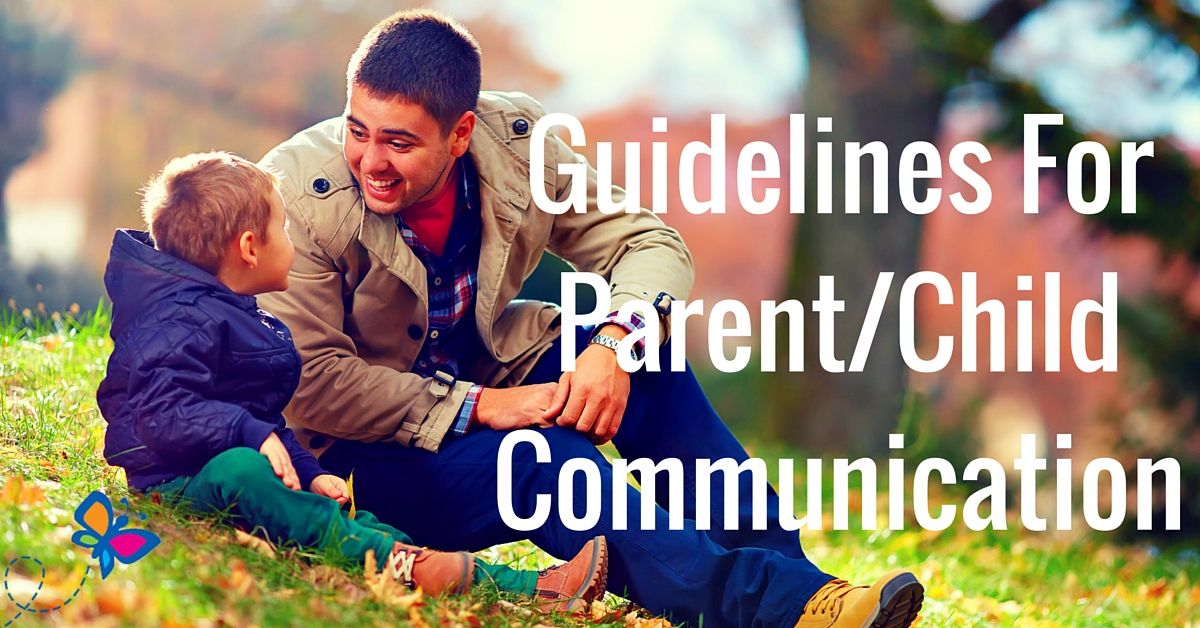
Unlocking Potential: Identifying Which Communication Style Suits Your Child
Effective communication is the cornerstone of a healthy parent-child relationship. Understanding which communication style resonates best with your child is crucial for fostering their emotional well-being, academic success, and overall development. This article delves into the various communication styles, providing insights and practical tips to help you connect with your child on a deeper level and nurture their unique communication needs. Determining which communication method is most effective involves careful observation and adaptation.
The Importance of Understanding Your Child’s Communication Style
Children are not miniature adults. They perceive and process information differently, and their communication styles vary widely. Recognizing which communication style your child prefers allows you to tailor your interactions, leading to more meaningful conversations and stronger bonds. Ignoring this can lead to misunderstandings, frustration, and even behavioral issues. Knowing which communication style works best can improve your relationship with your child.
- Improved Relationships: When you communicate in a way that your child understands, you build trust and strengthen your relationship.
- Reduced Conflict: Miscommunication is a major source of conflict. By understanding your child‘s style, you can minimize misunderstandings and resolve conflicts more effectively.
- Enhanced Emotional Well-being: Children who feel understood are more likely to express their emotions openly and healthily.
- Academic Success: Effective communication is essential for learning. When children feel comfortable communicating with their parents and teachers, they are more likely to succeed academically.
Common Communication Styles in Children
Identifying which communication type your child uses is the first step towards better understanding. There are several common communication styles observed in children. Recognizing these styles can help you adapt your approach.
The Visual Learner
Visual learners thrive on seeing information. They respond well to diagrams, charts, pictures, and demonstrations. When communicating with a visual learner, use visual aids whenever possible. For example, if you’re explaining a math problem, draw a diagram to illustrate the concept. Offering a visual aid can help you determine which communication method is best.
- Strategies: Use flashcards, mind maps, and videos.
- Tips: Write down instructions, use color-coded notes, and encourage them to draw or doodle while learning.
The Auditory Learner
Auditory learners prefer to hear information. They learn best through lectures, discussions, and audio recordings. When communicating with an auditory learner, speak clearly and concisely. Encourage them to participate in discussions and ask questions. Understanding which communication style they prefer is key.
- Strategies: Read aloud to them, use audiobooks, and engage in discussions.
- Tips: Encourage them to record lectures, listen to music while studying, and participate in group discussions.
The Kinesthetic Learner
Kinesthetic learners learn best through hands-on experiences. They need to touch, feel, and move to fully understand information. When communicating with a kinesthetic learner, incorporate physical activities and hands-on projects. It can be difficult to discern which communication type a kinesthetic learner prefers, but observation is key.
- Strategies: Use building blocks, puzzles, and role-playing activities.
- Tips: Encourage them to take breaks and move around while studying, participate in physical activities, and use manipulatives.
The Verbal Communicator
Verbal communicators excel at expressing themselves through words, both written and spoken. They enjoy conversations, storytelling, and writing. Engaging a verbal communicator requires careful attention to language and detail. Understanding which communication style they prefer is essential for effective interaction.
- Strategies: Engage in open-ended conversations, encourage journaling, and provide opportunities for public speaking.
- Tips: Listen attentively, provide constructive feedback, and encourage them to express their thoughts and feelings.
The Non-Verbal Communicator
Non-verbal communicators rely heavily on body language, facial expressions, and tone of voice. They may struggle to express themselves verbally but are highly attuned to non-verbal cues. Interacting with a non-verbal communicator requires patience and careful observation. Determining which communication methods work best can be challenging.
- Strategies: Pay attention to their body language, use gestures and facial expressions, and create a safe and supportive environment.
- Tips: Be patient, avoid interrupting, and encourage them to express themselves in other ways, such as drawing or writing.
Factors Influencing a Child’s Communication Style
Several factors can influence a child‘s communication style, including their personality, temperament, cultural background, and developmental stage. Understanding these factors can provide valuable insights into their communication preferences.
- Personality: Introverted children may prefer written communication, while extroverted children may thrive on verbal interaction.
- Temperament: Some children are naturally more expressive and outgoing, while others are more reserved and cautious.
- Cultural Background: Cultural norms can influence communication styles, such as the level of directness or the importance of non-verbal cues.
- Developmental Stage: As children grow and develop, their communication skills and preferences evolve.
Tips for Identifying Your Child’s Communication Style
Identifying which communication style your child prefers requires careful observation, experimentation, and open communication. Here are some practical tips to help you uncover their unique communication needs.
- Observe Their Behavior: Pay attention to how your child responds to different communication methods. Do they seem more engaged when you use visual aids, or do they prefer to listen to stories?
- Ask Questions: Ask your child directly about their communication preferences. What helps them learn best? How do they prefer to receive information?
- Experiment with Different Approaches: Try different communication styles and see which ones resonate best with your child.
- Seek Feedback: Ask teachers, caregivers, and other adults who interact with your child for their observations and insights.
- Be Patient: It may take time to fully understand your child‘s communication style. Be patient and continue to observe, experiment, and communicate openly.
Adapting Your Communication Style to Meet Your Child’s Needs
Once you’ve identified your child‘s communication style, it’s essential to adapt your communication approach to meet their needs. This may require you to step outside of your comfort zone and try new strategies. The key is to be flexible and willing to adjust your approach as needed. Determining which communication style to use in various situations is a continuous process.
- Active Listening: Give your child your full attention, listen attentively, and ask clarifying questions.
- Empathy: Try to understand your child‘s perspective and acknowledge their feelings.
- Clear and Concise Language: Use language that is appropriate for your child‘s age and developmental stage.
- Positive Reinforcement: Praise and encourage your child‘s efforts to communicate effectively.
- Patience: Be patient and understanding, especially when your child is struggling to express themselves.
Common Communication Challenges and How to Overcome Them
Even with the best intentions, communication challenges can arise. Here are some common challenges and strategies for overcoming them. The challenge often involves understanding which communication style to use in a particular scenario.
- Misunderstandings: Clarify your message and ask your child to repeat back what they heard.
- Emotional Outbursts: Remain calm and avoid reacting defensively. Give your child space to cool down and then address the issue calmly.
- Resistance to Communication: Create a safe and supportive environment where your child feels comfortable expressing themselves.
- Lack of Attention: Minimize distractions and engage your child in activities that capture their attention.
The Role of Technology in Communication
Technology plays an increasingly important role in communication, offering both opportunities and challenges. While technology can facilitate communication and provide access to information, it can also create distractions and hinder face-to-face interactions. It’s crucial to use technology mindfully and to balance screen time with other forms of communication. Consider which communication method is most appropriate when using technology.
- Opportunities: Video calls, educational apps, and online communities can enhance communication and learning.
- Challenges: Excessive screen time can lead to social isolation and reduced face-to-face communication skills.
- Strategies: Set limits on screen time, encourage face-to-face interactions, and use technology as a tool to enhance communication, not replace it.
Seeking Professional Help
If you’re struggling to communicate effectively with your child, don’t hesitate to seek professional help. A therapist or counselor can provide guidance and support, helping you to develop effective communication strategies and address any underlying issues. They can help you determine which communication strategies will be most beneficial.
Understanding which communication style resonates with your child is an ongoing journey. By observing, experimenting, and communicating openly, you can foster a strong and healthy relationship based on mutual understanding and respect. Remember that every child is unique, and their communication needs may evolve over time. Be flexible, adaptable, and always willing to learn and grow alongside your child. This continuous effort will lead to more meaningful connections and a stronger parent-child bond.
[See also: Understanding Child Development Stages]
[See also: Effective Parenting Techniques]
[See also: Building Strong Family Relationships]

